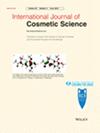We conducted a study on women with sensitive skin of various skin tones to analyse their skin characteristics and preferences for foundation shades.
Volunteers were categorized based on their individual typological angle, and their preferences were assessed using self-perception and software-based mass aesthetic assessment. The Baumann Questionnaire is a valuable tool for identifying patients with sensitive skin and gaining a comprehensive understanding of their skin sensitivity. The skin characteristics of two groups were compared using a more suitable classification method.
Individuals diagnosed with sensitive skin typically have skin tones classified as Types I, II and III, with Type I being the most common in sensitive skin cases. The sensitive group exhibited higher levels of transepidermal water loss, lighter skin tone, lower yellowness, increased glossiness, higher haemoglobin content, more acne, fewer blackheads, and fewer pores. Among them, Type I skin is characterized by lower elasticity, increased oiliness, higher hydration levels and fewer visible pores. Type II skin is characterized by lower hydration levels, higher oiliness and increased redness. Type III exhibits more pores, decreased oiliness and enhanced elasticity. Foundations No. 2 and No. 3 are fairer than foundations No. 1 and No. 4. In the self-assessment, Type I and Type II subjects preferred No. 3, while Type III subjects preferred No. 1 and No. 4 because they matched their skin tone. The results of the software evaluation showed that popular aesthetics preferred Type I and Type II to use No. 2, and Type III to use No. 2 and No. 3, as they resulted in a fairer complexion.
Sensitive skin of different skin tone types confronts different skin problems. The findings also highlight the public's inclination towards lighter foundation shades, despite the common practice of selecting shades that harmonize with one's inherent skin tone.



